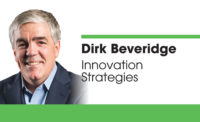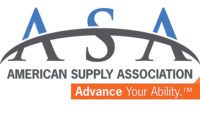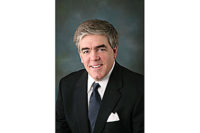ASA ISATs to present what's next

Next month, nearly 90 ASA leaders and volunteers will gather in Southern California to hear solutions presented by the three issue strategic-action teams (ISATs) that were established to develop solutions to the pressing threats impacting our industry and the way our members will need to compete by 2027. Acting on the resounding cry of “What’s Next?” by last year’s Winter Strategic Meeting participants, each ISAT was charged to dive deep into each issue, identify a comprehensive detailed plan of action, determine the resources needed to truly solve these issues, and to determine the sources of those resources to solve the mega issue and the metrics by which we can measure our success as we move forward.
Each team started its work thinking about what winning looks like in the age of rapid change. What are the most significant trends that members will face? What will be required in the evolution of distribution businesses to remain relevant and successful? What specific recommendations must ASA strategically focus on in 2019 and beyond? And what are the resources and tools, and access to capital that will be required to lead members into the future? The following is a glimpse of what each team will report at the Winter Leadership Meeting:
The Human Capital ISAT Challenge
The Human Capital ISAT has focused on what it would take to recruit 60,000 to 100,000 new employees with the needed competencies into the industry by 2027. The team focused on the complexity and scope of the human capital challenge that is beyond the ability of any one company and requires a unified industry effort that will attract a diverse group of candidates into the industry. It also focused on the hybrid solution that will create a universal, positive and accurate narrative for PHCP-PVF distribution industry, provide plans and resources to demonstrably increase awareness of quality career opportunities in channel businesses, and provide ready-to-use tools and resources for members to use in their local markets.
The Spectrum ISAT Challenge
What can ASA do to help its members survive and thrive by raising the member awareness of how they are positioned for the future, helping them think strategically about the change that is needed within their business, and provide tools and resources that lead them to a viable and relevant future has been the mission that has driven the Spectrum ISAT. This team has primarily focused on assessing where ASA member businesses are currently positioned on the spectrum of distributors and provide the means for assessing their level of comfort for where they are and to help support member efforts to advance their organizational ability to effectively compete in the rapidly changing market or to position the business for an exit. In either scenario, ASA will offer services, tools and resources to help the member take quantifiable action, and the important next steps toward their strategic intent.
The Technology Innovation ISAT Challenge
The third ISAT focusing on technology issues was guided by the challenge of what ASA can do to catalyze growth-oriented member companies to strategically and successfully digitally transform their company over the next 10 years through efforts to help members understand, embrace, prepare and execute technology and the growing role it will play in growth-oriented businesses. This solution will define the technologies that are considered today’s table stakes, provide specific expertise regarding “tomorrow’s” technologies that customers and suppliers will value, and will also provide a longer horizon view of the technologies of the future that have a degree of probability of making their way into the industry and growth-oriented businesses. The solution of research, testing, exploring other industries’ use, roadmaps, implementation plans, etc., will be sustaining (institutionalized) in that the technologies are constantly moving through this spectrum (i.e tomorrow’s technology becoming today’s table stakes).
The outcomes of this meeting are sure to set the direction for the future of ASA members. More to come on this important work.
Looking for a reprint of this article?
From high-res PDFs to custom plaques, order your copy today!







